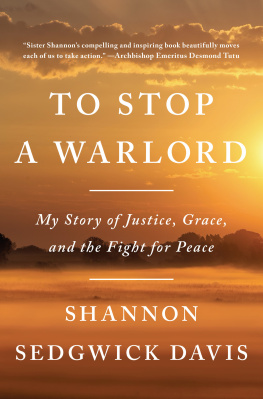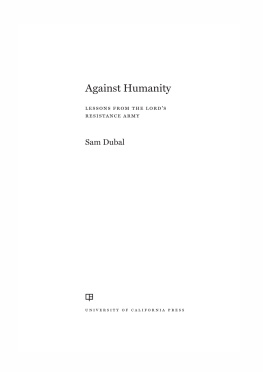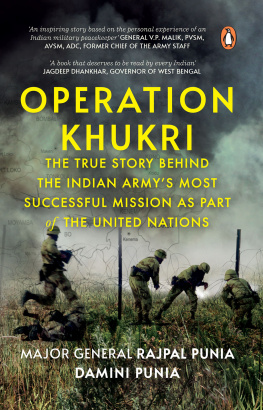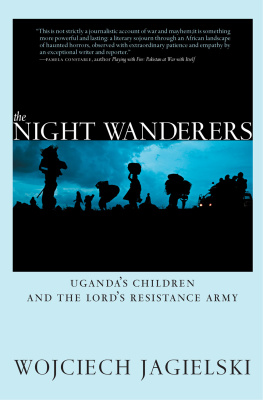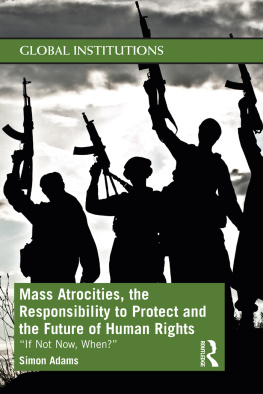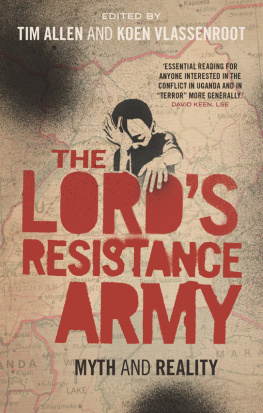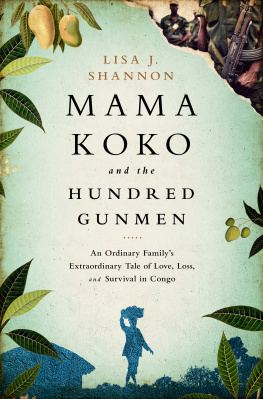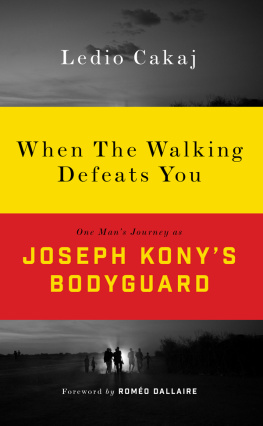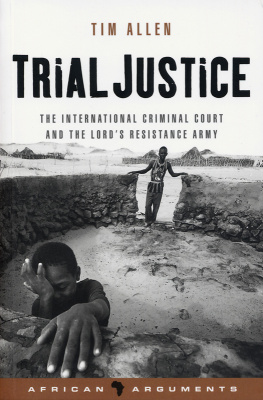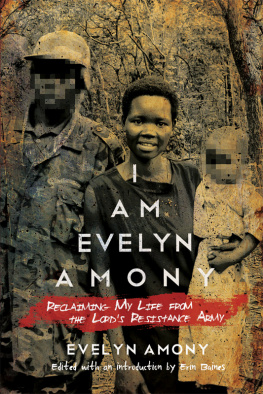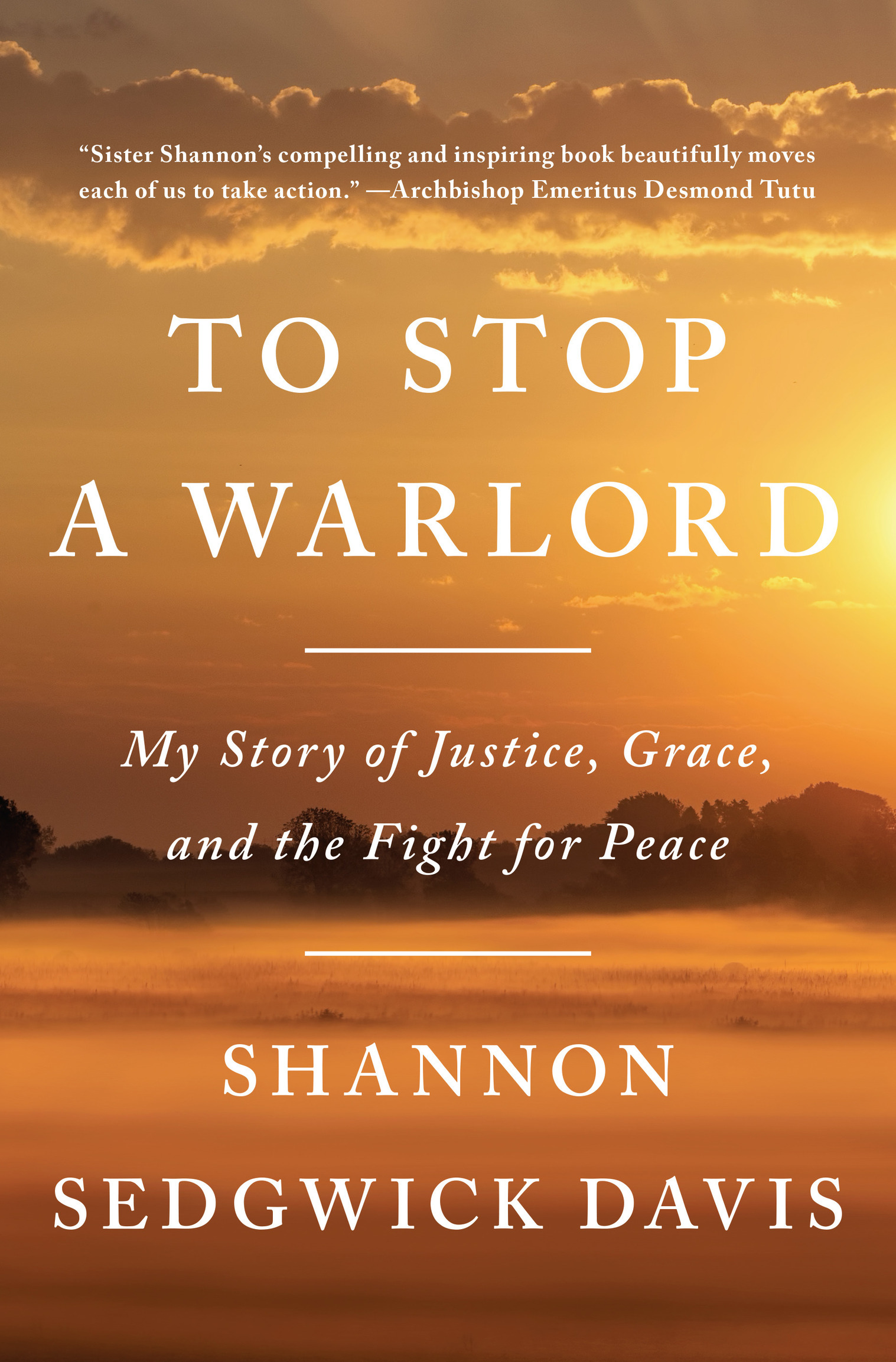Contents
Landmarks
Print Page List
Copyright 2019 by Shannon Sedgwick Davis
All rights reserved.
Published in the United States by Spiegel & Grau, an imprint of Random House, a division of Penguin Random House LLC, New York.
Spiegel & Grau and Design is a registered trademark of Penguin Random House LLC.
Library of Congress Cataloging-in-Publication Data
Names: Davis, Shannon Sedgwick, author.
Title: To stop a warlord : my story of justice, grace, and the fight for peace / Shannon Sedgwick Davis.
Description: First edition. | New York: Spiegel & Grau, [2019]
Identifiers: LCCN 2018024393 | ISBN 9780812995923 (hardback)
| ISBN 9780812995930 (ebook)
Subjects: LCSH: Davis, Shannon Sedgwick. | Human rights workersUgandaBiography. | Lords Resistance Army. | Military assistanceUgandaHistory 21st century. | Special forces (Military science)UgandaTraining of. | STTEP (Private military company)History. | Human rights workersUnited StatesBiography. | Military assistance, AmericanHistory21st century. | InsurgencyUganda. | UgandaHistory1979 | LCGFT: Autobiographies.
Classification: LCC DT433.287.D38 A3 2019 | DDC 967.6104/4092 [B]dc23 LC record available at https://lccn.loc.gov/2018024393
Ebook ISBN9780812995930
spiegelandgrau.com
randomhousebooks.com
Book design by Jo Anne Metsch, adapted for ebook
Cover design: Greg Mollica
Cover photograph: Howard G. Buffett
v5.4
ep
Contents
INTENTIONS
I wrestled incessantly with whether or not to tell this story. In some ways, the decade-long journey felt too sacred for paper.
In our shared efforts to help protect those vulnerable to Joseph Konys violence in Central Africa, I worked with incredible souls, people who were united in giving their all to push humanity forward and past some terrifying events. I feel honored and humbled to have met so many of these heroes along the way.
Some of those involved in this story remain in positions of government or have profiles that could be affected by their appearance in this book. Ive changed several names in order to protect these people. (All pseudonyms are denoted with an asterisk at first introduction.) Certain details of sensitive operations have been omitted. Although I seek to honor all of the participants unique perspectives and contributions, this story is by necessity my account, describing experiences from my perspective. Given the nature of military operations, we didnt always have full visibility of every dynamic at play, and the story is limited to my perspective and understanding of the events that unfolded. For times I was not present, I relied heavily on the recollections and stories that were relayed to me. I did my best to corroborate each of these stories but due to the long time that had passed, exact details and dates could not always be confirmed.
More than anything, I hope this book serves as an encouragement to engage more deeply in issues of injustice in the world, to look at the problems around us and seek creative solutions. I hope it adequately honors local heroes on the ground and encourages more support of locally driven solutions in areas of poverty and conflict. I hope it inspires deep listening, lively discussion, and thoughtful action as we strive toward a world with more justice, accountability, and love.

PART ONE
We are caught in an inescapable network of mutuality, tied in a single garment of destiny.
Whatever affects one directly, affects all indirectly.
MARTIN LUTHER KING, JR.
TO STOP A WARLORD
I T WAS LONG after midnight in San Antonio, Texas, when the phone rang. Brody, my four-year-old, had crawled in beside me an hour or two before and was taking up most of the bed. I never sleep deeply anymore, even at home, even in the middle of the night. When I heard my cellphone ring I was quick, pulling on my robe, heading for the back porch where I took my early morning calls from the field. The alarm on the back door beeped as I crossed into the night. Steps away from my sleeping husband and sons, I suddenly felt as distant from them as I did during my trips to Central Africa, where I slept alone in a tent, surrounded by the snoring of hundreds of men, where being so far from my family was a physical ache in my chest.
Laren Pooles voice came through the static of his satellite phone. Laren managed the operations of our mission in the field. His voice rippled with urgency as he spoke the words, the coded phrase we had devised should a moment like this ever arise.
Boss, he said, its time to bet the farm.
My heart leapt and my stomach dropped, some combination of excitement and dread, my mind whirring with the additional resources wed need to pull together in support of a targeted operation, an unconventional collaboration between the Ugandan military, US Special Forces, humanitarian organizations, and the Bridgeway Foundation, the organization I run. Our cobbled-together alliance of private and public, military and humanitarian organizations was piloting a new way of trying to stop mass atrocities, and Larens words were the signal that it was time to go all in on our mission to catch Joseph Kony.
It was 2013, and by that point Joseph Kony and his Lords Resistance Army (LRA) had terrorized the citizens of four countries in Africa for more than twenty-five years. The numbers were staggering: more than a hundred thousand dead. At least thirty thousand children abducted and forced to become soldiers or sex slaves. At the height of the conflict, ninety percent of the northern Ugandan populationalmost two million innocent civilianswere forcefully displaced and put under curfew by the Ugandan military in their attempts to counter the LRA. Government troops denied civilians access to their land and they were crowded into squalid camps, caught in the midst of a brutal war. Even those devastating figures dont fully describe the suffering unleashed by the LRA. Their violence was especially brutal, often worse than Id seen elsewhere in my human rights work. Kony and his army were setting a bar for evil in our world and kept raising it. In 2005, when the International Criminal Court in The Hague issued its first-ever arrest warrants, indictments were handed down against Joseph Kony and four other LRA leaders for war crimes and crimes against humanity. Three of five indictees, including Kony, were still at large, and the violence against the innocent had only worsened.
For a decade Kony had been like a ghost, invisible except in the stories of those who had escaped from his army or survived LRA attacks. Over the last five years, all the information our shared mission had gathered had made us fairly certain we knew the general area in which he was hiding. But pinpointing his exact location in that terrain was nearly impossible. On bad days, Id often wondered whether our hope of capturing him and bringing him to justice was nothing more than a moonshot. But now, our target had materialized clearly in our sights: Konys nerve center in Kafia Kingi (K2), on disputed land between Sudan and South Sudan, had been identified.

